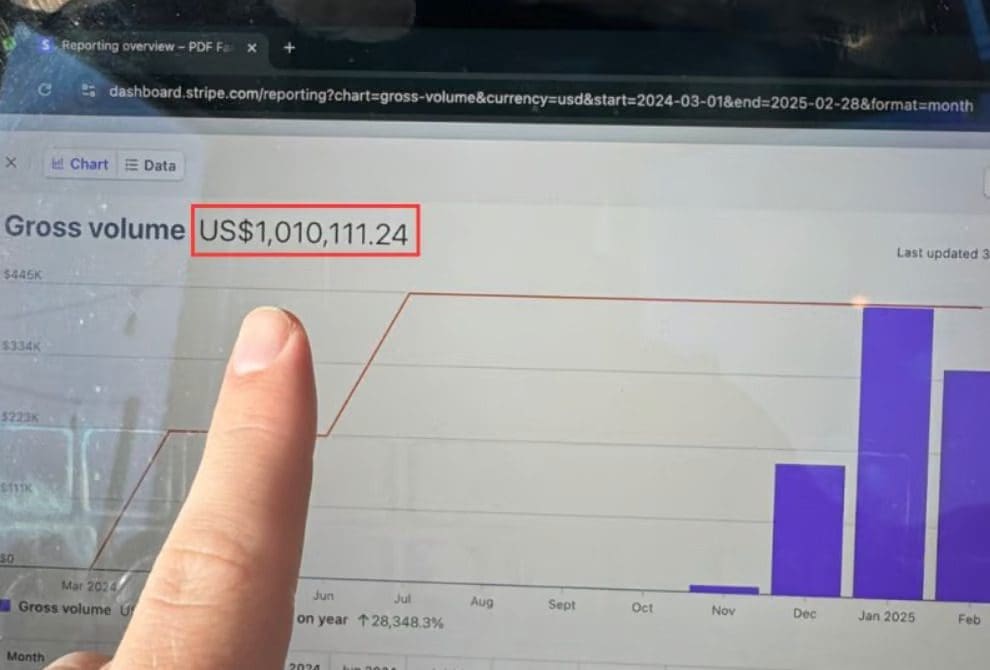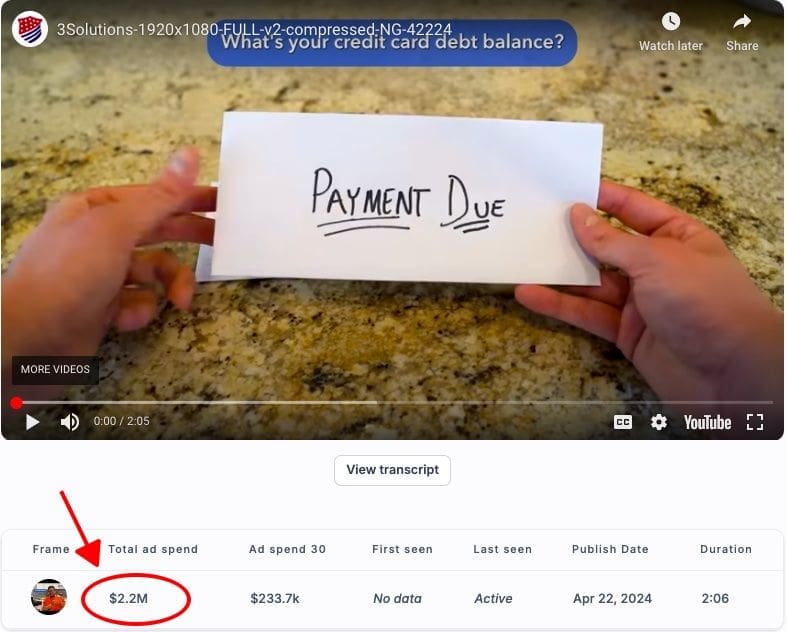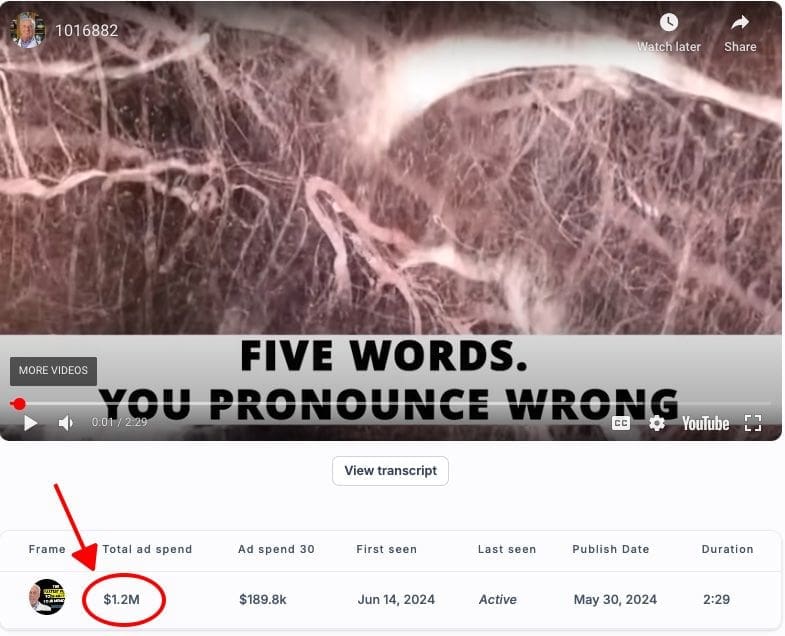In 2008, Jeff Bezos and Elon Musk sat in the same room, listening to a lecture that would forever change how they approached consumer behavior.
The speaker? Nobel Prize winner Daniel Kahneman.
The topic? A psychological phenomenon so powerful it could make people walk slower just by showing them certain words.
This wasn't hypnosis. It wasn't manipulation. It was something far more subtle and pervasive: priming.
And if you've ever bought something on Amazon with one click or felt an inexplicable urge to buy a Tesla... you've experienced it firsthand.)
Here’s why YOU as a YouTube advertiser need to pay attention:
Because today, this same psychological principle is being used to create some of the most compelling ads on YouTube - and most viewers don't even realize they're being influenced.
And once you understand how it works, you'll never look at advertising the same way again.
In this post, we'll break down:
 "Spy" on 29 Million YouTube Ads
"Spy" on 29 Million YouTube Ads
(and Landing Pages)!
Unlock proven strategies for success with the VidTao Premium YouTube Ad Library. Get instant access to your FREE VidTao trial today
Take the guesswork out of YouTube ads – start scaling smarter.
But first, let's talk about what happened in that room in 2008…
When Kahneman took the stage that day, he wasn't there to talk about business strategy or marketing tactics. He was there to reveal something far more fundamental about human nature.
He showed how subtle environmental cues - words, images, even temperatures - could unconsciously influence human behavior in profound ways.
The example that made Bezos lean forward in his chair?
A simple experiment where researchers exposed people to words associated with old age (without ever mentioning the word "old"). The result? They walked significantly slower when leaving the building.
Musk, known for his obsession with human psychology, was equally captivated. But here's what really got their attention:
These effects weren't just about walking speed. They could influence:
And most importantly? People had no idea they were being influenced.
Fast forward to today...
~ update from our friends at Funnel of the Week ~
“Anti Guru” Info Product: 0 to $1M in < 4 months
Our friends at Funnel of the Week just dropped a new funnel breakdown…
…This time it’s a business that didn't exist 4 months ago. But now? It's generating $518k/month.
Go here to see more at Funnel of the Week….
Keys to this rapidly scaling info product funnel include…
- The front end $27 offer that generates $688 total cart value PLUS $97/mo recurring (all while qualifying leads for the back end offer)
- The $5k+ “done for you” back end product sold via email that adds massive profit
- Solid cart abandon + high ticket email followup funnels
- And a whole lot more…
Understanding the 7 Types of Priming
What most marketers don't realize is that priming isn't just one technique - it's a sophisticated arsenal of psychological triggers. Here's how each type works:
1) Conceptual Priming: Your brain automatically prepares for related concepts when it encounters an idea. Show someone a coffee cup, and their brain is already thinking about morning routines and productivity before you say a word.

Conceptual priming
2) Perceptual Priming: Physical characteristics prepare your brain for what's coming. Sharp, clean lines prime you for precision and quality. Soft, curved elements prime you for comfort.
3) Semantic Priming: Words have power beyond their literal meaning. When you read "expert" before seeing someone speak, your brain is already primed to receive their words as authoritative.

Semantic priming
4) Emotional Priming: The reason commercials show happy families before revealing their product. By the time you see what they're selling, your brain has created an emotional association.
5) Goal Priming: Subtle cues activate specific goals in your mind. Seeing someone achieve something makes you more likely to pursue similar achievements.
6) Behavioral Priming: Your brain has mirror neurons that prepare you to mimic what you see. When you watch someone confidently using a product, your brain rehearses that same behavior.

Behavioral priming
7) Response Priming: This prepares your brain for specific reactions. A countdown creates anticipation. A question demands an answer.

Response priming
The Science Behind Pre-Persuasion
Kahneman's research revealed something profound: The conscious mind isn't where decisions are made - it's where decisions are justified.
In his own words: "The conscious mind thinks it's the Oval Office when it's really the press office."
This insight explains why traditional marketing often fails. By the time you're making your pitch, the viewer's brain has already decided how to feel about your message.
Modern YouTube advertisers who understand this don't start with their pitch - they start by priming the emotional and psychological environment that makes their pitch inevitable.
The Anatomy of Three $6M+ YouTube Ads: A Psychological Breakdown
But here's what makes this persuasive technique fascinating...
Today we’ll show you 3 example YouTube ads that have collectively generated over $6M in ad spend. And what's really amazing about these ads is that they take the idea of priming to the next level. Because they don't just use one type of priming, they layer multiple types of priming to create what I call a "priming cascade."
In the next few minutes, you'll see:
But here's what else makes them fascinating: They're still running. Month after month, these advertisers keep pouring money into these ads. Why? Because they're masterclasses in applied psychology.
But more importantly, you'll understand exactly how they do it.
We'll break down:
Fair warning: Once you see how these ads work, you'll never look at YouTube advertising the same way again.
Let's dive in...
Want to brainstorm with us on new ways to scale your business with
YouTube Ads (and other performance video platforms)?
Join us for a free YouTube ad brainstorming session here:
Priming Ad Example #1: Debt Relief ($2.2M in Ad Spend)
This one actually uses 7 different types of priming. The cumulative effect: This ad creates a psychological journey that mirrors the debt relief process itself, and it has 2.2M USD in ad spend. It uses visual and emotional triggers to move viewers from paralysis to action through carefully orchestrated priming sequences. Let's dive deeper into its psychological cascade:
1) Conceptual Priming (00:00:00 - 00:00:02)
- Shows hands opening envelopes marked "Overdue Payment"
- Inside reveals "$17,463.24 in debt"
- Kitchen counter setting
Why it's masterful: The ad immediately creates associations with monthly bill anxiety - the moment when reality hits. The kitchen counter setting is crucial because it places the financial crisis in a domestic environment, making it feel personal and immediate. The specific debt amount ($17,463.24) primes viewers to think about their own exact number, creating immediate self-reflection
2) Perceptual Priming (00:00:02 - 00:00:07)
- Clean, organized presentation of "3 EASY SOLUTIONS" on a white background
- A clean white background replaces the cluttered counter
- Professional table layout with clear calculations
Why it's effective: The visual journey from disorder to order primes viewers to expect transformation. The stark contrast between scattered bills and the organized solution presentation suggests the possibility of control. The professional layout of calculations primes viewers to see debt as a solvable math problem rather than an emotional burden.
3) Semantic Priming (00:00:10 - 00:00:17)
- Uses the phrase "First step to tackling your credit card debt"
- Emphasizes "understanding how much debt you actually have"
- Introduces "solutions" early in the narrative
Why it works: The language carefully shifts from problem-focused ("debt," "overdue") to solution-focused ("tackling," "understanding"). "Actually" in "actually have" primes viewers to question their current understanding, making them more receptive to new information. The word "tackling" suggests active engagement rather than passive victimhood.
4) Emotional Priming (00:00:20 - 00:00:35)
- "Minimum payments could literally keep you in debt for decades"
- Shows a calculation of "14 to 26 years to pay off"
- Gradually writing numbers that grow larger over time
Why it's powerful: The slow revelation of the time calculations creates mounting dread. The word "literally" primes authenticity and harsh truth, while "decades" transforms a present problem into a life-altering burden. The act of writing numbers that grow larger mimics the mounting anxiety of accumulating debt, priming viewers to feel the weight of inaction.
5) Goal Priming (00:00:36 - 00:00:48)
- Introduces "popular method to tackle debt"
- Details step-by-step approach with "Start with minimum payments"
- Shows progression from small to larger debts
Why it's effective: The word "popular" primes social proof before revealing the method. Breaking down the solution into clear steps primes achievability - each step feels manageable. The progression from smallest to largest debt primes viewers to focus on small wins first, making the larger goal feel attainable.
6) Behavioral Priming (00:00:53 - 00:01:00)
- Shows physical act of crossing out "INTEREST"
- Demonstrates connecting dollar signs with arrows
- Visualizes "knocking out One debt at a time"
Why it works: The physical actions of crossing out and connecting create a visual metaphor for debt elimination. This primes viewers to imagine themselves taking control through specific actions. The phrase "knocking out" primes a fighter's mentality, suggesting victory through deliberate action.
7) Response Priming (00:01:19 - 00:01:38)
- Features relatable testimonials in kitchen settings
- Shows emotional reactions: "I can't thank them enough"
- Includes skepticism overcome: "This is not too good to be true"
Why it's masterful: The testimonials are carefully sequenced to mirror the viewer's journey from skepticism to relief. The kitchen settings maintain the domestic connection established at the start. The repetition of gratitude primes viewers to expect emotional relief while addressing skepticism head-on primes trust.
The Cumulative Effect:
The ad creates a psychological journey that mirrors the debt relief process itself:
Each type of priming builds on the previous one, creating what behavioral psychologists call a "response chain" - making the final call to action almost irresistible.
Priming Ad Example #2: Tactical Hoodie ($2.6M in Ad Spend)
Here's another priming cascade that takes a slightly different approach. The result? Over 2.6 million in ad spend on this one. It's fascinating because it uses priming to elevate a simple sweatshirt into a symbol of masculine competence - and convinces viewers to pay 5x the normal price for a hoodie. Ready to see a priming cascade in action? Check this out:
Let's dissect how it masterfully layers different types of priming:
1) Conceptual Priming (00:00:00 - 00:00:05)
- "you're not a child you're a man"
- Shows a man wearing multiple layers
- Contrasts weakness with strength
Why it's masterful: The ad immediately primes masculine identity by creating a contrast between childish behavior (wearing many layers) and manly solution (single tactical hoodie). This creates immediate conceptual links between the product and masculine competence, making the purchase decision about identity rather than just clothing.
2) Perceptual Priming (00:00:05 - 00:00:09)
- Shows masculine body postures
- Displays tactical/military-style design elements
- Uses strong, angular visual composition
Why it's effective: Every visual element is carefully chosen to prime masculine aesthetics. The angular lines, tactical details, and confident postures prime viewers to see the product as a tool of masculine capability rather than just clothing. The contrast between weak posture (cold man in multiple layers) and strong posture (confident man in a tactical hoodie) visually primes the transformation the product promises.
3) Semantic Priming (00:00:09 - 00:00:21)
- "Blocks wind repels rain"
- "Incredible comfort wherever you are"
- Contrasts with "weak flimsy" regular hoodies
- "You're not a kangaroo you're a man"
Why it works: The language consistently primes masculine values of strength, capability, and functionality. By degrading regular hoodies as "weak" and "flimsy," it primes viewers to see their current clothing as inadequate. The repeated emphasis on "man" vs other entities (child, kangaroo) primes identity-based decision-making.
4) Emotional Priming (00:00:21 - 00:00:34)
- Shows men in challenging outdoor situations
- Demonstrates mastery over environmental conditions
- Portrays confidence and competence
- "Thousands of men around the world already love"
Why it's powerful: The ad taps into deep emotional desires for mastery, respect, and belonging to a capable group of men. It primes feelings of inadequacy with current solutions and then offers emotional resolution through product adoption. The social proof ("thousands of men") primes tribal belonging.
5) Goal Priming (00:00:34 - 00:00:42)
- Shows various usage scenarios (wild, home, office)
- Demonstrates versatility and adaptability
- "perfect square profile that's never too bulky"
- "customized fit that's tailored to you"
Why it's brilliant: Primes multiple aspirational goals simultaneously - outdoor capability, professional appearance, and personal style. The versatility messaging primes viewers to see the product as a solution to multiple life situations, justifying the premium price through utility.
6) Behavioral Priming (00:00:42 - 00:01:02)
- Shows confident men in various activities
- Demonstrates easy pocket access
- Displays practical usage scenarios
- "Everybody knows guys look better in bare skin"
Why it's effective: Each demonstration primes specific behaviors that reinforce masculine identity. The casual confidence in challenging situations primes viewers to imagine themselves performing similarly. The practical demonstrations prime ease of use and natural integration into daily life.
7) Response Priming (00:02:53 - 00:03:20)
- "60% off deal only lasts for a short while"
- "make sure you choose your size today"
- "reserve your order before stock runs out"
Why it's masterful: Creates multiple urgency triggers that prime immediate action. The discount frames inaction as financial loss, while limited availability primes scarcity response. The size selection prompt personalizes the urgency.
The Cumulative Priming Effect:
The ad builds a compelling psychological cascade:
What makes this ad particularly effective is how it transforms a basic clothing purchase into a statement about masculine identity and capability. Each type of priming reinforces this central theme, making the premium price feel like an investment in identity rather than an expense for clothing.
 "Spy" on 29 Million YouTube Ads
"Spy" on 29 Million YouTube Ads
(and Landing Pages)!
Unlock proven strategies for success with the VidTao Premium YouTube Ad Library. Get instant access to your FREE VidTao trial today
Take the guesswork out of YouTube ads – start scaling smarter.
Priming Ad Example #3: Memory Loss ($1.2M in Ad Spend)
By using sophisticated priming techniques, this memory loss ad transforms a common supplement sale into a medical emergency. Its estimated ad spend is 1.2M USD. Check out how each type of priming in this ad builds upon and reinforces the others:
Let's dissect each priming layer:
1) Conceptual Priming (00:00:00 - 00:00:06)
- Opens with "five words you pronounce wrong"
- Transitions to "brain start shutting down"
- Introduces "dementia as type3 diabetes"
Why it's masterful: The ad creates a chain of associations that escalate from mild concern (mispronouncing words) to severe threat (brain shutdown). This progression primes viewers to connect minor memory lapses with serious cognitive decline, making their own occasional forgetfulness feel more threatening. The diabetes comparison primes viewers to think of brain health as a manageable medical condition, like diabetes.
2) Perceptual Priming (00:00:00 - 00:00:03)
- White, intertwined fibers against a black background
- Moving through neural network visualization
- Clean, scientific aesthetic
Why it's effective: The visual elements mirror medical brain scans and scientific imagery, priming viewers to receive the information as medical rather than commercial. The dark background creates a sense of severity, while the white fibers suggest the complexity and fragility of brain function. This visual framing primes viewers to take the message seriously before a single word is spoken.
3) Semantic Priming (00:00:06 - 00:00:14)
- References "Mayo Clinic"
- Mentions "doctors"
- Uses the phrase "shocking discovery"
- Employs medical terminology
Why it works: The careful selection of authoritative medical terms primes viewers to receive the information as legitimate medical advice rather than advertising. "Shocking discovery" primes viewers for revelation while maintaining scientific credibility. The medical language creates a framework where the viewer is positioned as a patient rather than a consumer.
4) Emotional Priming (00:00:14 - 00:00:20)
- "if you or a loved one is often forgetting things"
- "suffering with brain fog"
- Links everyday experiences to serious conditions
Why it's powerful: This sequence taps into two deep emotional triggers - personal fear and concern for loved ones. By connecting common experiences (forgetting things, brain fog) to serious health threats, it transforms everyday moments of forgetfulness into emotional alarm bells. The word "suffering" is particularly effective as it elevates inconvenience to medical urgency.
5) Goal Priming (00:00:53 - 00:01:02)
- Introduces "clinically proven 30-second bedtime technique"
- Promises to "destroy the brain rot while you sleep"
- Emphasizes ease and effectiveness
Why it's brilliant: The ad primes two powerful goals simultaneously - health improvement and effortless solution. The "30-second" and "while you sleep" phrases prime viewers to expect minimal effort for maximum reward. "Clinically proven" primes confidence in the solution before it's even revealed.
6) Behavioral Priming (00:01:02 - 00:01:08)
- "that you can do tonight"
- "no matter how old you are"
- "no matter your current condition"
Why it's effective: This sequence removes all potential barriers to action. It primes immediate action by suggesting universal applicability and instant start capability. The repetition of "no matter" phrases systematically eliminates common excuses for inaction, priming viewers for immediate response.
7) Response Priming (00:02:13 - 00:02:28)
- "See it now while it's still online"
- "Big Pharma files a new application every day to get it taken down"
- Creates artificial scarcity and urgency
Why it's masterful: This final sequence primes both urgency and rebellion. The suggestion of powerful forces trying to suppress the information creates what psychologists call "reactance" - a desire to act against perceived restrictions. The time pressure ("while it's still online") primes immediate action by suggesting future unavailability.
The Cumulative Priming Effect
What makes this ad particularly effective is how each type of priming builds upon and reinforces the others:
The result is a psychological journey that transforms viewers from casual observers to motivated actors in less than three minutes.
How to Apply Strategic Priming: A Checklist for Turning Psychology Into Profit
After analyzing these three high-performing ads, we can extract powerful principles for creating more effective marketing. Here's how to apply these insights to your own campaigns:
1. The First 3 Seconds Matter Most
What we learned:
- Debt Relief ad opens with overdue bills
- The Hoodie ad begins with a masculine identity challenge
- Memory ad starts with neural imagery
Here’s how you can apply it:
- Start with visual elements that prime your core emotion (anxiety, fear, aspiration)
- Use colors that support your psychological objective (red for urgency, blue for trust)
- Show rather than tell (scattered bills speak louder than "debt is stressful")
2. Layer Your Priming Effects
What we learned:
Each successful ad used multiple priming types simultaneously:
- Visual cues support verbal messages
- Emotional triggers reinforce logical arguments
- Identity priming strengthens call-to-action
Here’s how you can apply it:
Create a priming map for your ad:
- What do they see? (Perceptual)
- What do they feel? (Emotional)
- What do they think about? (Conceptual)
- What do they want to do? (Behavioral)
3. Use Pattern Interrupts
What we learned:
- Memory ad: "5 words you pronounce wrong"
- Hoodie ad: "You're not a kangaroo"
- Debt ad: Specific number "$17,463.24"
Here’s how you can apply it:
- Start with unexpected statements that break typical ad patterns
- Use specific numbers instead of round figures
- Create a contrast between expected and actual messaging
- Challenge common assumptions directly
4. Build Identity-Based Priming
What we learned:
Each ad positioned viewers in a specific role:
- Debt ad: Financial victim → Smart solver
- Hoodie ad: Average consumer → Capable man
- Memory ad: Potential patient → Proactive protector
Here’s how you can apply it:
- Define your viewer's current identity state
- Show their desired identity state
- Create a clear transformation path
- Use language that reinforces the new identity
5. Stack Your Social Proof
What we learned:
- Debt ad: "helped over half a million people"
- Hoodie ad: "thousands of men around the world"
- Memory ad: "45,006 people are already doing it"
Here’s how you can apply it:
- Lead with specific numbers
- Show real testimonials early
- Use authority figures strategically
- Demonstrate social momentum
6. Create Urgency Through Priming
What we learned:
- Debt ad: "Before next Friday"
- Memory ad: "While it's still online"
- Hoodie ad: "60% off deal only lasts for a short while"
Here’s how you can apply it:
- Use time-based triggers that feel natural, not forced
- Create scarcity through external forces (not arbitrary limits)
- Stack multiple urgency signals
- Make deadlines specific and believable
As Bezos and Musk learned in that 2008 lecture, the key to influence isn't in what you say - it's in how you prepare your audience's mind to receive what you say.
The question isn't whether priming works - these multi-million dollar ads prove it does. The question is: How will you use these principles to create more effective, ethical, and engaging marketing for your audience?
The answer might just transform your business, just as Kahneman's insights transformed those of the tech titans who heard him speak that fateful day in Silicon Valley.
Have a great week!
PS - Go here to Claim Your Free Trial of VidTao Premium: Access 29 Million YouTube Ads & Their Landing Pages!
PPS - Are you spending $1k/day+ on Paid Ads? 

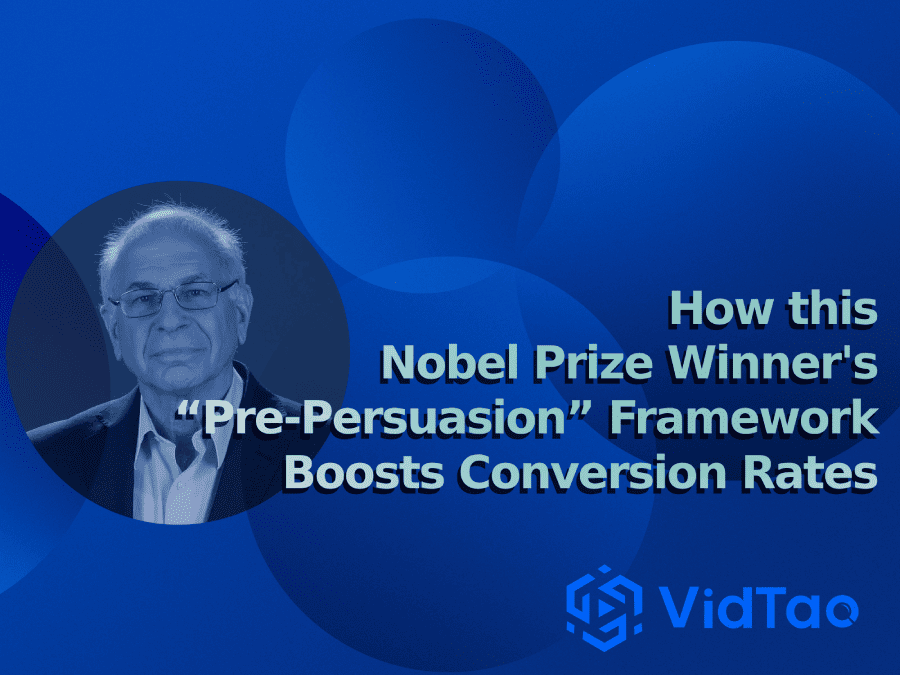
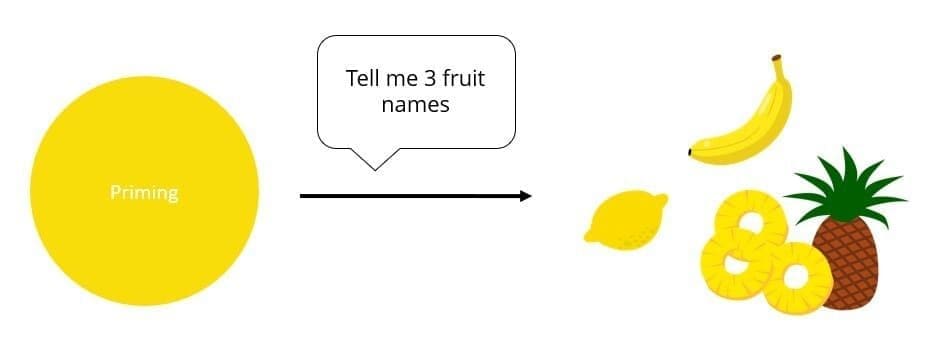

 Claim Your FREE VidTao Trial Now!
Claim Your FREE VidTao Trial Now!

